Sicko | lingo
"in-k&-'men(t)s-r&-b&l
words you can not pronounce will not help you
our little online moleskine
"in-k&-'men(t)s-r&-b&l
words you can not pronounce will not help you
geplaatst door
[sic!]
op
14:50
0
reacties
![]()
labels: language
Some colour studies for the little man's crib.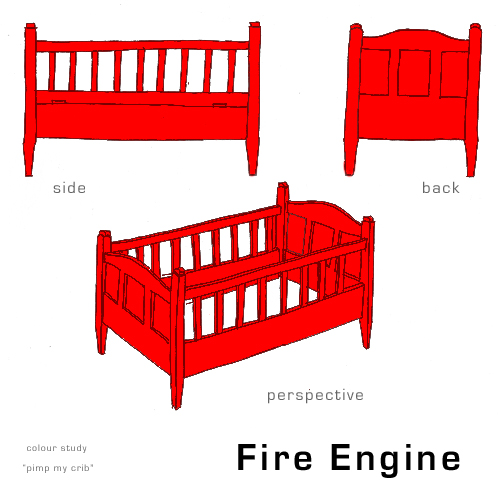
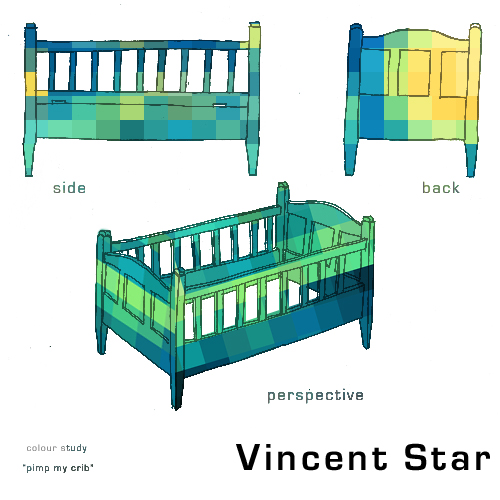
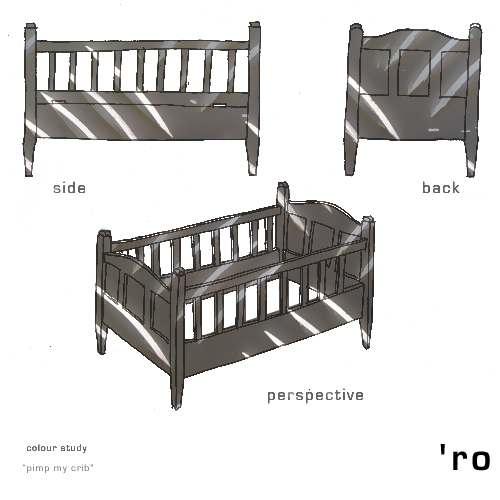
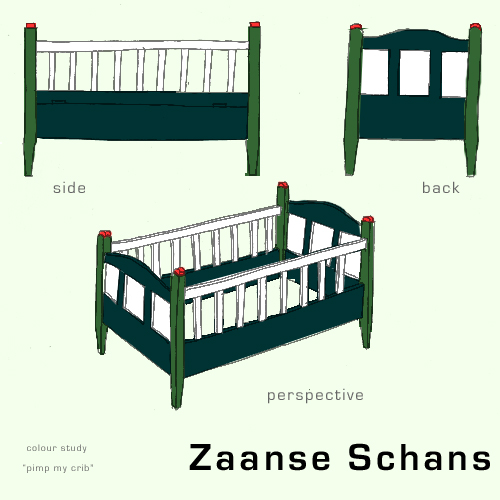
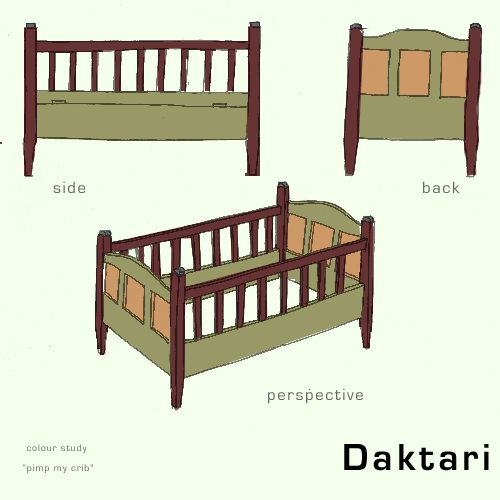
geplaatst door
[sic!]
op
22:24
0
reacties
![]()
labels: arts´ncrafts

close to the Mexican Border
geplaatst door
[sic!]
op
15:33
0
reacties
![]()
labels: photography
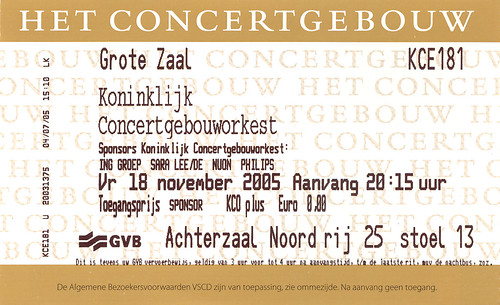
Koninklijk Concertgebouworkest
dirigent Sir Colin Davis
viool Vesko Eschkenazy
Dvorák · Vioolconcert in a, op. 53
Elgar · Tweede symfonie in Es, op. 63
sponsor(s) ING Groep, Sara Lee, Nuon, Philips
geplaatst door
[sic!]
op
01:07
0
reacties
![]()
labels: music

We expect to understand the other while having difficulties recognizing our own face on a picture or our own voice on a recording.
geplaatst door
[sic!]
op
10:17
0
reacties
![]()
labels: photography
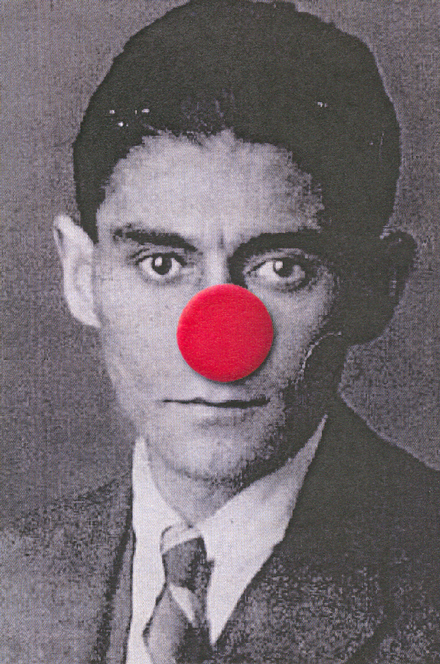
Really, it totally changed my perspective on his writings.
geplaatst door
[sic!]
op
19:28
0
reacties
![]()
labels: photography
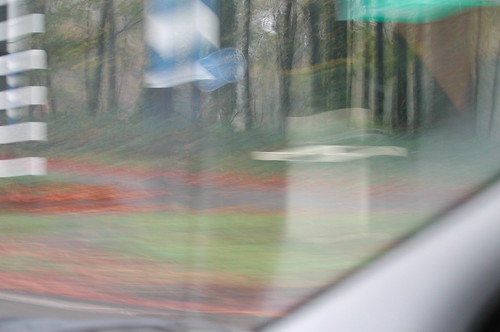
It doesn't take much time to pass this roadside monument on my way to work. The accident itself took probably even less time. The wake it left must be enormous.
geplaatst door
[sic!]
op
21:28
0
reacties
![]()
labels: photography
Elizabeth Füller bought herself a set of a box of glass negatives at a West Hollywood estate sale.
In the box, she found 14 glass negatives. The scans were recently posted on Flickr as The Swedish Mystery Photos. Swedish, because although the plates may be German, a sticker on the box indicates that it was bought at the Helsingborgs Fotografiska Magasin. In this post I would want to try and unravel this Swedish Photo Mystery.
The pictures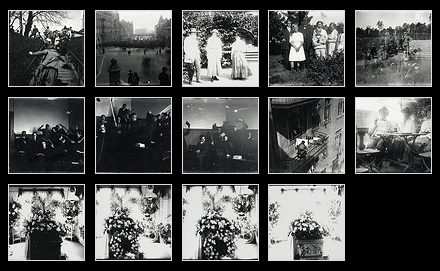
The Camera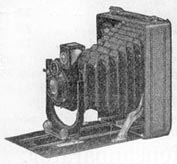 According to information from the History of the Swedish Camera, by Per-Anders Westman, the camera used is most probable a Hefoma camera from the same company that sold the plates, the Helsingborgs Fotografiska Magasin. As 10x15 plates were used, it must have been a Type III, which was actually a rebranded Kodak camera. Looking at the list prices of the popular Kodak Brownie camera's from around the 1920s, it must have been affordable for middle class people. A first indication of who the photographer actually was.
According to information from the History of the Swedish Camera, by Per-Anders Westman, the camera used is most probable a Hefoma camera from the same company that sold the plates, the Helsingborgs Fotografiska Magasin. As 10x15 plates were used, it must have been a Type III, which was actually a rebranded Kodak camera. Looking at the list prices of the popular Kodak Brownie camera's from around the 1920s, it must have been affordable for middle class people. A first indication of who the photographer actually was.
First pictures ?
Judging by the technical problems the photographer apparently faced, it is likely that these were probably his first pictures. The picture from the balcony, although interesting to us, is probably an incidental exposure. Additionally, the over exposure and double exposure indicate problems operating the camera and understanding the basics of photography. Another indication of inexperience is in the compositions. At times the subjects are at too great a distance to produce effective portraits. Finally, retaking pictures of emotionally important moments (the funeral, but also the boyschool class row) indicate that the photographer was feeling insecure.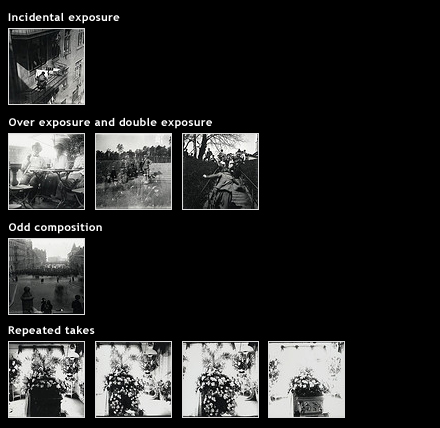
Clustering
The pictures themselves give the best clues as to where the pictures were taken, who took them and why. They show different scenes, once deemed fit to be recorded by the owner of the camera. Although the glass plates do not have numbers or markings that tell us when and in which order they were taken, clustering may help.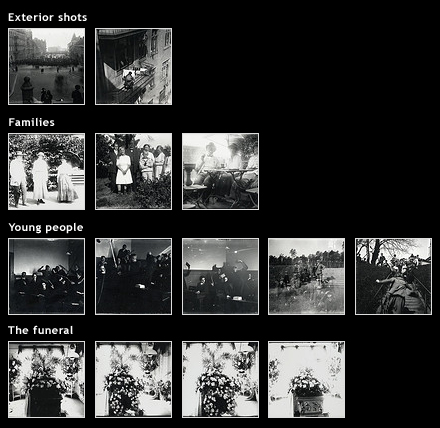
Apart from the funeral -evidently an emotional event- the frequencies of the topics indicate a strong interest in young people and family.
Exterior shots
On the Flickr website, Mathias Levin confirmed that the exterior shots were taken in Helsingborg and Peter Scherdin provided a recent picture from the same angle. The image itself shows a large crowd, with flags and banners. The atmosphere seems relaxed, with a single police officer standing on the street.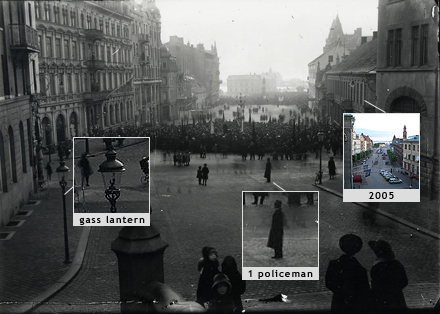
Young people
To determine who the person was that was at the other end of the camera, the boy school pictures provide valuable information.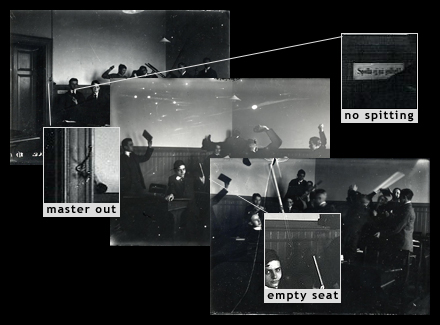
Judging by the empty coat hook by the door, the master is not present in the classroom. Note the "no spitting" sign by the door. It is questionable whether a teacher would have his pupils misbehave in front of his camera in the early 1920s, so it is safe to assume that the photographer is one of the boys, since girls do not go to boy schools. Maybe the photographer even had one of his classmates snap a shot and we would actually have a portrait of the photographer, but most likely he took them himself and left a seat empty on the second row from the front on the left column.
Family pictures As Avihenda pointed out, the two pictures with three persons on it were taken at the Sofiero Castle gardens near Helsingborg. comparing the picture, one can see that the group is the same, the lady with the fruity hat and the bearded gentleman with the dark pants, the light shirt and the typical collar. I wouldn't be surprised if the people on the picture were the parents of the young photographer. Especially the relaxed posture of the "father"and the slightly bored expression of the mother seem to indicate that they feel at ease with the photographer.
As Avihenda pointed out, the two pictures with three persons on it were taken at the Sofiero Castle gardens near Helsingborg. comparing the picture, one can see that the group is the same, the lady with the fruity hat and the bearded gentleman with the dark pants, the light shirt and the typical collar. I wouldn't be surprised if the people on the picture were the parents of the young photographer. Especially the relaxed posture of the "father"and the slightly bored expression of the mother seem to indicate that they feel at ease with the photographer.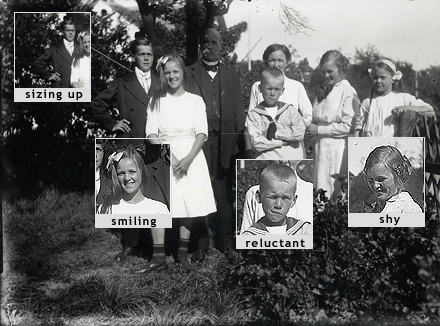
The other group portrait also indicates familiarity with the photographer and supports the idea that it might be a young lad with a camera. The only person taking a formal stance is probably his peer and the mixed expressions of the other children supports that. The person most prominently pictured is the smiling girl. Is she flirting? It might explain why her brother and father stand so close to her.
The wake
Assuming that the photographer is a Swedish teenager from Helsingborg, who has just taken pictures with his very own camera, all the pictures seem to make sense. It is a young man from a well-to-do family. He visits a boy school and goes out during the weekend with his parents to walk in the gardens. Maybe he has a love interest and persuaded the family of his fiancé to pose for him. The pictures of the coffin are a bit harder to interpret.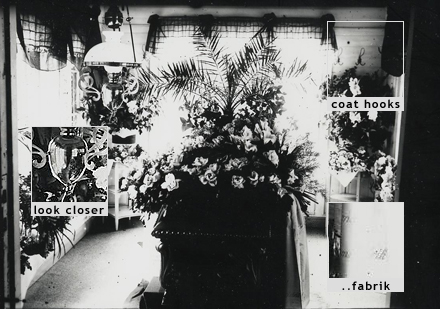
What we see is a room with a coffin. It is not a funeral home, but a living room. (In the 1920s it was not uncommon to have the deceased lie in state at his own home.) The lamp by the window is a model with counter weights normally used above dining tables. A high resolution scan might actually reveal the photographer! The only thing to infer from the picture is that it was probably an older man. The living room features coat hooks, indicating that he lived in a compact home, maybe an old people home, without a hallway for a coat rack. The coffin is adorned with an embroided sheet. When mirrored the only word legible is ...fabrik, Swedish for factory. Given the time in which the picture was taken, it is most probable that it was a man and maybe the grandfather of the young photographer.
geplaatst door
[sic!]
op
20:52
2
reacties
![]()
labels: photography
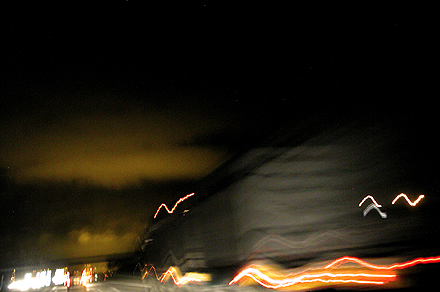
Time spent, getting to and from work. Not at home, not at work, just behind the wheel.
geplaatst door
[sic!]
op
19:36
0
reacties
![]()
labels: photography
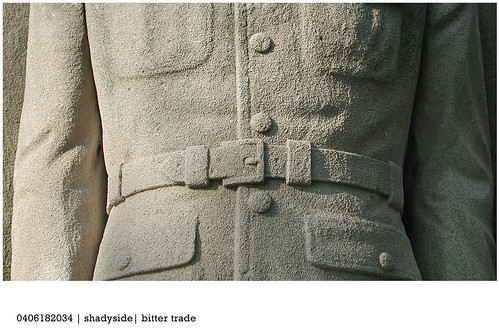
Peter Rimar's work reminded me of a statue I saw in Pittsburgh's Shadyside. A concrete statue on a busy roundabout.
geplaatst door
[sic!]
op
21:40
0
reacties
![]()
labels: photography
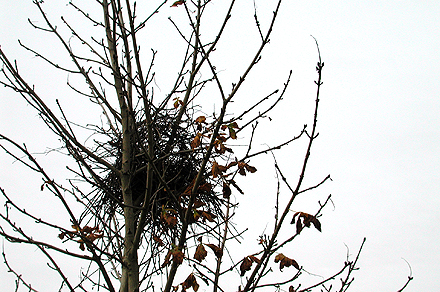
I have heard ornithologists typify magpies as sloppy nest builders. I wonder how they would do, using only their mouth.
geplaatst door
[sic!]
op
21:24
0
reacties
![]()
labels: photography
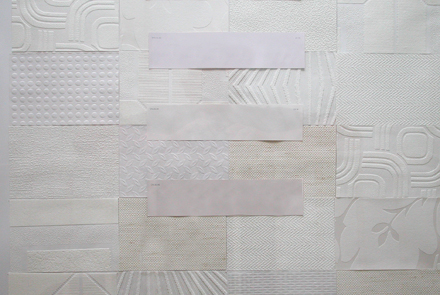
The girls have been going crazy about our house being too monastic. Maybe we got stuck in 80s minimalism. Finally we presented them with a decorational piece in the hall-way, in many shades of white :-)
geplaatst door
[sic!]
op
22:31
0
reacties
![]()
labels: arts´ncrafts
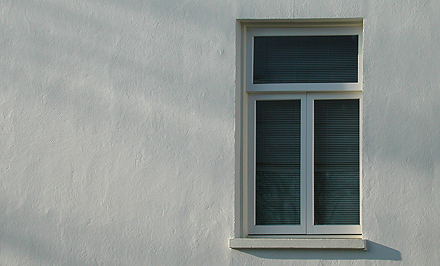
sun of fall, hugging a wall...
geplaatst door
[sic!]
op
22:21
1 reacties
![]()
labels: photography
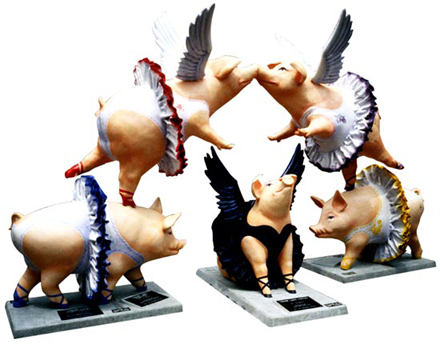
I am s l o w. Chuckling about the pun of "swine lake" until you discover it is as old as Pjotr Illjich's beard. (sigh)
geplaatst door
[sic!]
op
19:55
0
reacties
![]()
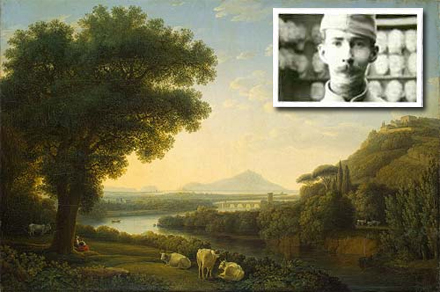
Sometimes you come across a single sentence that makes you lay down a book and ponder the words for a day or more. It is in Andrew Miller's "Ingenious Pain" where the Reverend leaves the site of a post-mortem examination and looks at the landscape.
It serves him like the little painted screens Italian priests are said to hold before the eyes of condemned men to hide the approaching scaffold.What must those screens have looked like? A Venetian cityscape, or a pastoral scene? Maybe one could even request a favourite work of art on the way to the executioner's workshop. A blinker as a final feast for the eyes.
geplaatst door
[sic!]
op
21:42
0
reacties
![]()
labels: pursuits
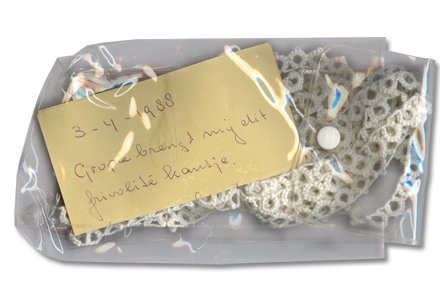
Today, Mother Martha brought us this tatting work, my grandmother made some 18 years ago. For the grandchild that was still to be born. She didn't know whether she would live to see one. She did. But by that time we'd forgotten about the tatting work.
The French name for tatting is frivolité, which also translates as lightheartedness. Although at times plagued by depression, my grandmother would call herself "happy me" (Jetje Pretje).
geplaatst door
[sic!]
op
19:38
0
reacties
![]()
labels: arts´ncrafts, family
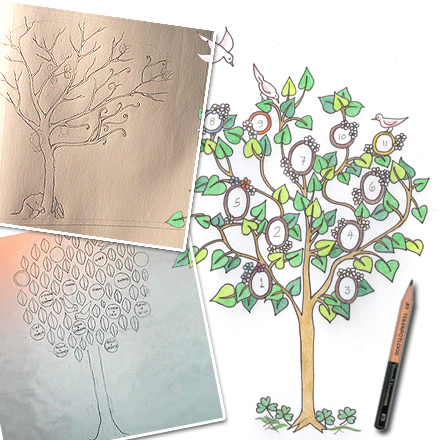
I am currently working on a sketch for the wall in the babyroom. It is going to feature the ancestors of our little man.
Claudia
geplaatst door
[sic!]
op
22:06
0
reacties
![]()
labels: arts´ncrafts, family
